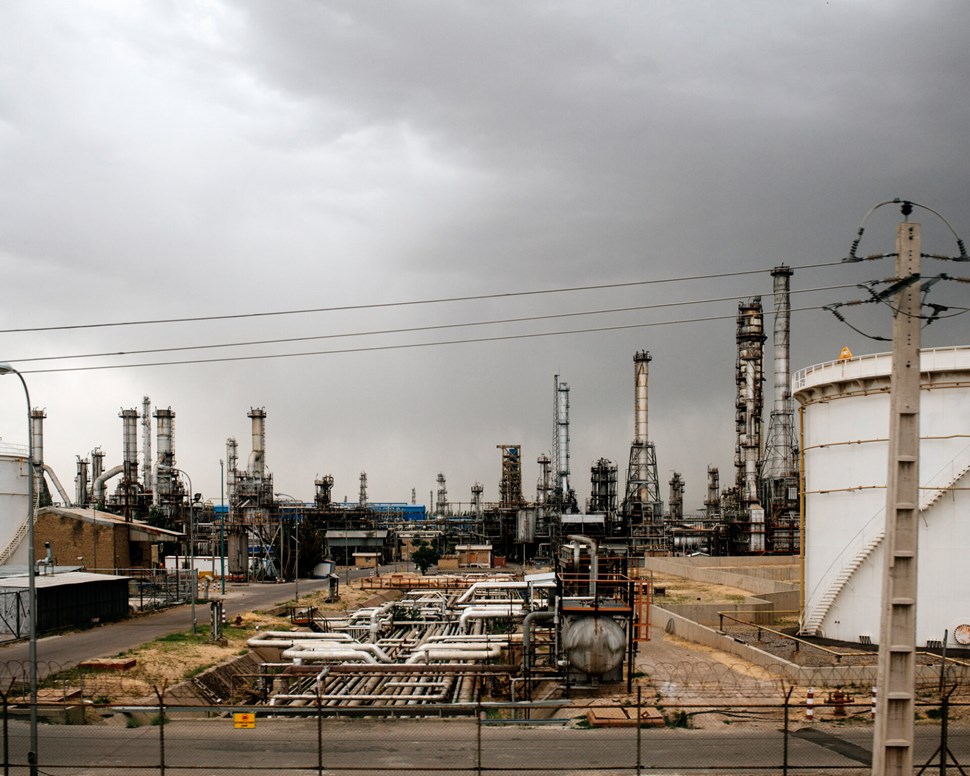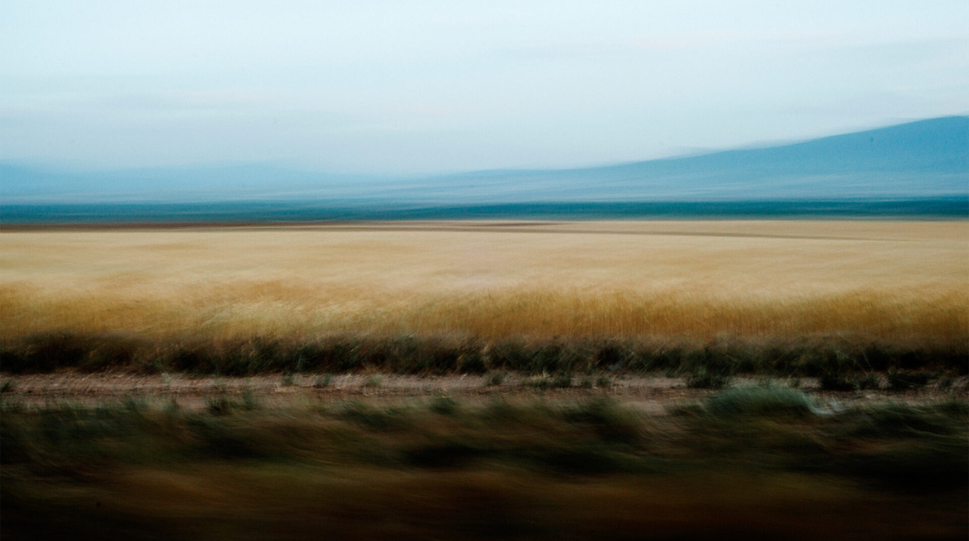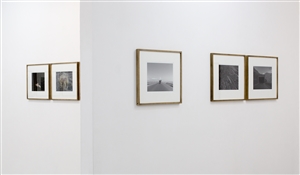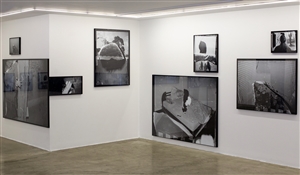"Evidence Railroad"; A Review of Khashayar Javanmardi's Solo Show at Silk Road Art Gallery
17 Aug 2022Original text in Farsi by Amir Esfandiari
Translated to English by Omid Armat
The Silk Road Art Gallery hosted a solo show by Khashayar Javanmardi from April 23 to May 23, 2022. Like other exhibitions in this gallery during the Coronavirus pandemic, this show was also held online. As suggested by its title, the show displayed photographs captured by the artist from behind the window of a train in different locations in Iran.
The exhibition's statement introduces its photographs as documents of Iran's first railroad, which are captured, according to the artist, from "the sky and land, soil and water, life and death" and address the country's "history and civilization, politics and culture, and reality and imagination."

Untitled | Khashayar Javanmardi | Source: www.silkroadartgallery.com
"Evidence Railroad" includes 31 photographs of the same size installed horizontally in the Silk Road Art gallery's space. The pictures show Iran's vast landscapes, each photographed in a different place, portraying the country's urban, rural, forest, industrial, and desert textures. The series starts with a picture of the gable roof of a building, the walls of which are hidden between the trees. As we proceed along this non-linear path, we see trees and forests. The photographer has noted villagers at work, construction sites within forest textures, factories, houses, buildings situated in the city margins, and vast landscapes indicating the region's natural texture, and eventually ended the series with desert landscapes.
Khashayar Javanmardi has sought to record documents from different locations throughout the country; these are immediate, objective pictures oscillating between Deadpan, landscape, and social documentary photography. The photographer's objective approach is visible in nearly all the images, recorded as long shots captured almost in the same view from behind the window of the train driving along Iran's first railroad that was put into operation in 1848. There are also some images in which the reflection of the photographer's hand is visible in the train's window, and in some others, the landscape is distorted. However, this has not weakened the series' primary goal of recording clear, specific documents from different places in the country. In other words, it has not turned the photographer's practice into amateurish photography centered on a personal journey. Instead, it has made the series emphasize the photographer's position as an observer of his homeland's landscapes. The photographer is looking to record events outside and nothing more. The subject mentioned above has caused a specific distance between the photographer, the camera, and the objects, while sometimes a vague appearance of the artist is visible in the pictures.

Untitled | Khashayar Javanmardi | Source: www.silkroadartgallery.com
Photographs of "Evidence Railroad" has stuck, more than anything, to their main path of recording immediate documents. As the series' key element, the train shows the way by connecting the north to the south as its primary use. We see nothing from the train's interior space and thus no sign of a personal connection to the train itself. Rather, the train plays the role of a narrator that presents events attracting the photographer's attention.
By depicting Iran's landscapes and what they have been subjected to, "Evidence Railroad" becomes a document of the years since the construction of the Trans-Iranian Railway. This document shows natural remains, skys, lands, waters, constructions, ruins, and the lives of people who play different roles along the path from the north to the south of the country. With its online presentation, the series connects the viewer through the monitor screen to the train's windows.
Cover and slider image:
- www.silkroadartgallery.com






